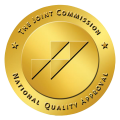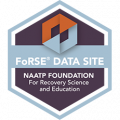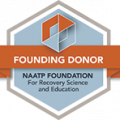Alcohol is perhaps the most abused substance that people have ever used, mainly because most don’t even know that their usage level is already well within abuse territory. There are those, however, who know they need help, which is why online searches like alcohol detox Indiana, or any other state for that matter, are immensely popular.
Unlike substance abuse that involves drugs, alcohol use is something that people don’t put much thought into, as alcohol has become a constant fixture in most social activities and gatherings. On top of that, the only restriction on alcohol use that people tend to remember is the prohibition of driving while under the influence.
Most people don’t even need a reason to drink alcohol, they take it because it’s there. The accessibility and the fact that alcohol is not a controlled substance make it immensely easy to get it and drink it anywhere and everywhere.
The human body has a natural filtration system that acts as a slow detox for whatever toxins there are in the body. Regardless of what most would say, alcohol is toxic to the body. Depending upon the person’s tolerance, the toxicity could take place immediately after just a few drinks, or in the case of chronic drinkers with a higher tolerance, much more.
In the case of binge drinkers, the level of toxicity in their bodies could be so high that it could not be handled by the body’s natural detoxing process. This goes beyond simply being inconvenient, as the toxicity could reach a level where it is already life-threatening. This is where a medical detox is immediately required.


What is the Alcohol Withdrawal Timeline
The initial symptoms will begin to manifest around 6 to 12 hours after the last drink. Depending upon the person, these symptoms could range from simply being uncomfortable to being unable to get out of bed all day.
Symptoms include:
- Tremors and twitches
- Profuse sweating
- Nausea
- Vomiting
- Hypertension (elevated blood pressure)
- Tachycardia (elevated heart rate)
- Elevated body temperature
- Hyperventilation (rapid breathing)
Some people could continue to experience a few or all of the initial symptoms a day after the last drink. Depending on the person, an additional symptom could be experienced, and it comes in the form of alcohol hallucinosis. This is where the person begins to see and hear things that aren’t really there. Some “ghost” sensations might also be felt during this period, such as tingling on different parts of the body, or even the pins and needles sensation.
Going into the second day from the last time alcohol was taken, some people could experience seizures of varying duration and intensity. Other than the hallucination, this is another reason why people who plan on quitting the habit of drinking should check themselves into medical detox. Some people say most of the initial symptoms have tapered off by this period, while others may experience all of the symptoms well into the third day after the last drink, particularly those who have been drinking for far longer than the others.
This period will demonstrate the importance of doing alcohol detox in a medical facility. Some go through the worst of the symptoms during this period, including a symptom known as delirium tremens. This symptom typically lasts 2 to 3 days, although some say they experienced it for up to a week.
Delirium tremens is a manifestation of the central nervous system reacting to the sudden loss of alcohol. As alcohol is a depressant, it dulled most of the stimuli that a person is exposed to while the alcohol was still in their system. Without alcohol, the brain becomes overstimulated with the influx of stimuli during detox, leading to this symptom.
Delirium tremens is known to come with a number of effects that could put the person in significant danger, particularly if they have a history of cardiovascular issues. It comes with:
- Agitation
- Aggression
- Irritability
- Severe confusion
- Severe autonomic hyperactivity (trembling, profuse sweating, tachycardia or elevated heart rate, nausea, and vomiting)
- Impaired ability to stay conscious
- Intense visual, tactile, or auditory hallucinations
- Tremors and twitches
- Seizures
Is Medication-assisted Treatment an Option for Alcohol Disorder?
Some of the medications used include:
This medication is for people already in the recovery process, are no longer drinking alcohol, and would want to continue avoiding alcohol. This medication is believed to stabilize the chemical signaling in the brain which is typically disrupted when the patient is in alcohol withdrawal. This medication is typically administered on the fifth day after the last drink and will achieve full effectiveness in five to eight days, and works best when used in conjunction with psychosocial support or therapy. It comes in tablet form for easy consumption and is taken three times a day.
This medication, however, does have its own side effects, including:
- Diarrhea
- Upset stomach
- Loss of appetite
- Anxiety
- Dizziness
- Insomnia
- Potential allergic reaction
- Abnormal heart rate
- Hypertension or hypotension
- Headaches
- Impotence
This medication is used to treat chronic alcohol intake and is most effective for people who have already gone through the detox process or have already stopped taking alcohol. This medication works by creating an acute sensitivity to ethanol in people, which results in the immediate sensation of a hangover in people who try to take alcohol. If the patient still tries to take even a small amount of alcohol, they could experience any of the following symptoms:
- Flushing
- Throbbing sensation in the head and neck
- Severe headaches
- Difficulty breathing
- Nausea
- Severe bouts of vomiting
- Profuse sweating
- Chest pains
- Palpitations
- Dyspnea (shortness of breath)
- Hyperventilation
- Tachycardia (elevated heart rate)
- Hypotension
- Loss of consciousness
- Fatigue
- Vertigo
- Blurred vision
- Confusion
It is highly advised that people on this medication should not try to take any amount of alcohol, as there are also more serious effects, including:
- Respiratory depression
- Cardiovascular collapse
- Abnormal heart rate
- Cardiac arrest
- Acute congestive heart failure
- Unconsciousness
- Convulsions
- Death
This medication is primarily used to manage alcohol or opioid use by significantly reducing the cravings for these substances. It is also believed to suppress the euphoria that people feel when they take substances. While not as potent as the other medications used in dealing with alcohol abuse and the symptoms of withdrawal, this medication is noted to suppress the desire for alcohol the most.
Naltrexone also comes with its own side effects, including:
- Insomnia
- Anxiety
- Nervousness
- Abdominal cramps
- Nausea
- Vomiting
- Fatigue
- Joint or muscle pain
- Headaches
- Loss of appetite
- Diarrhea
- Constipation
- Irritability
- Depression or melancholy
- Dizziness
- Skin rash
- Erectile dysfunction
- Delayed ejaculation
- Dysphoria (state of great unease or dissatisfaction)
- Anhedonia (decreased ability to feel pleasure)


















